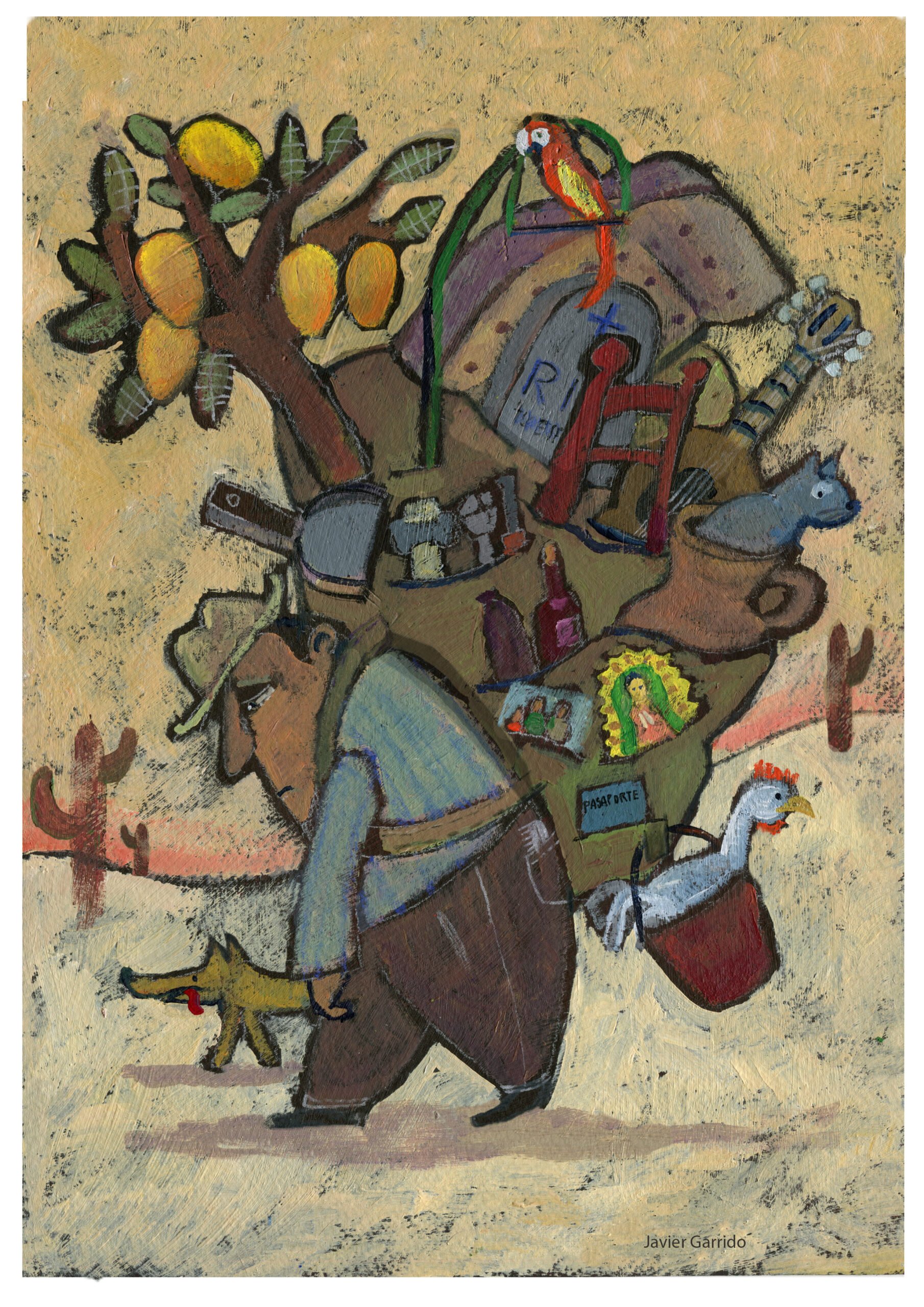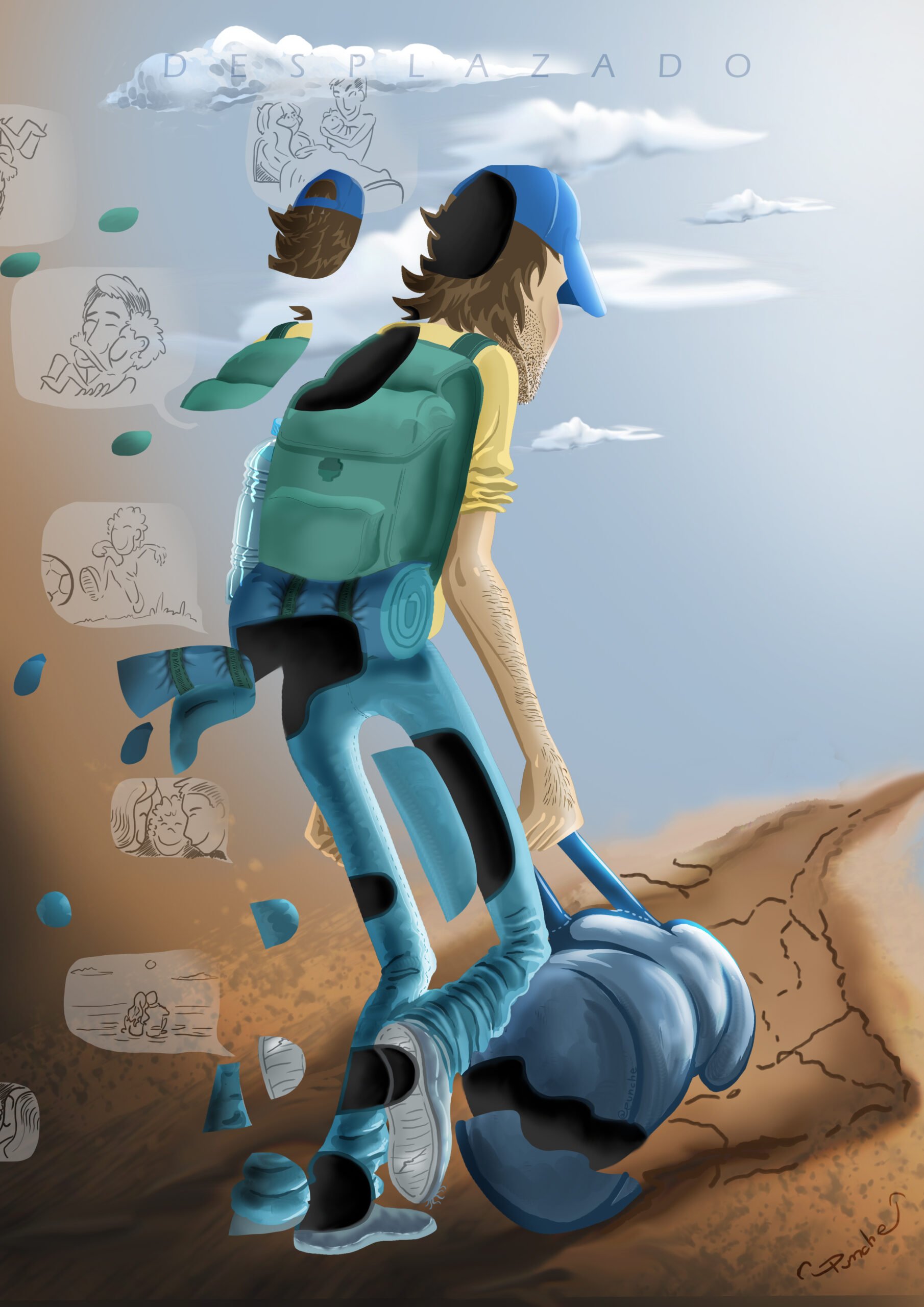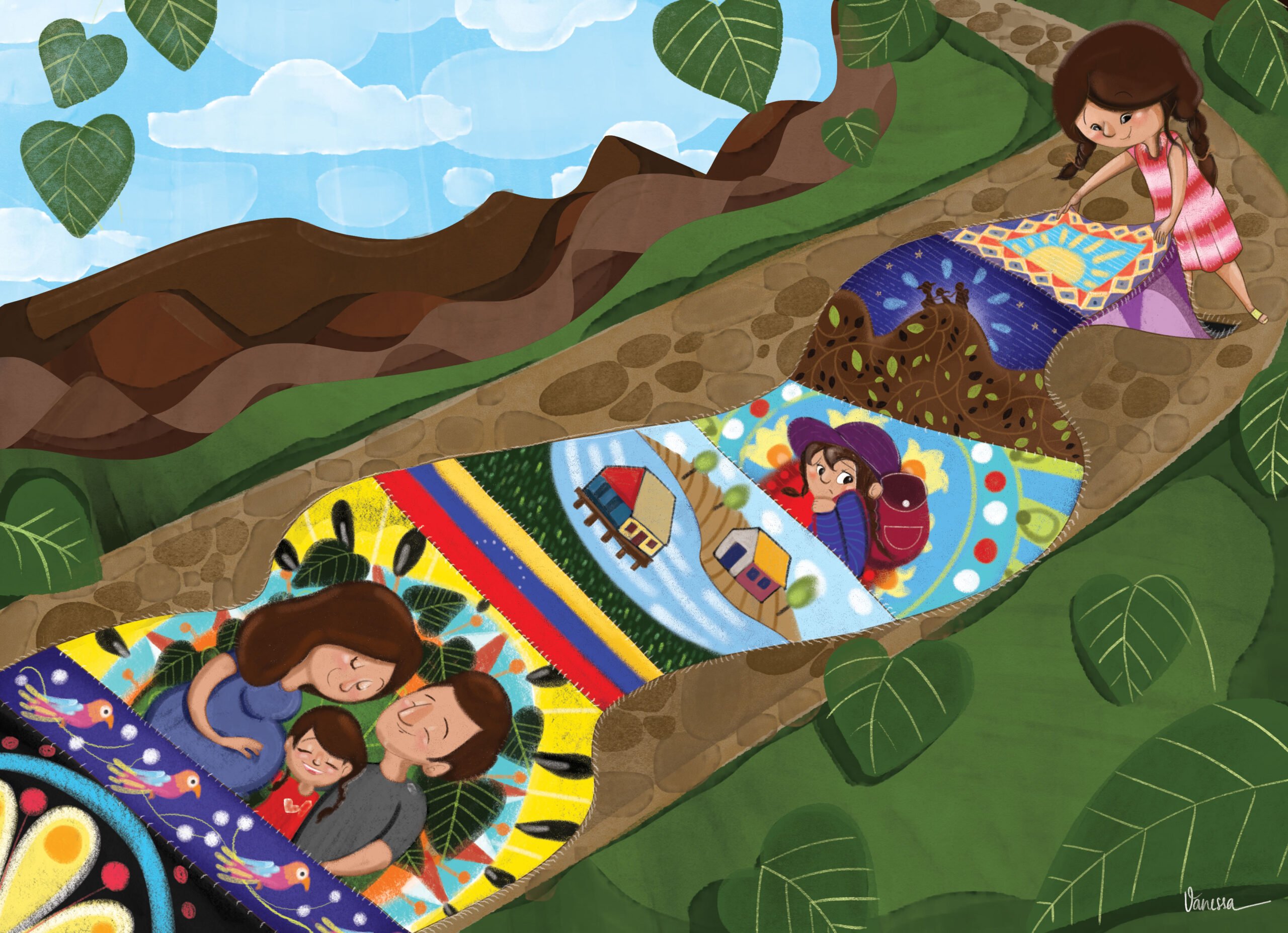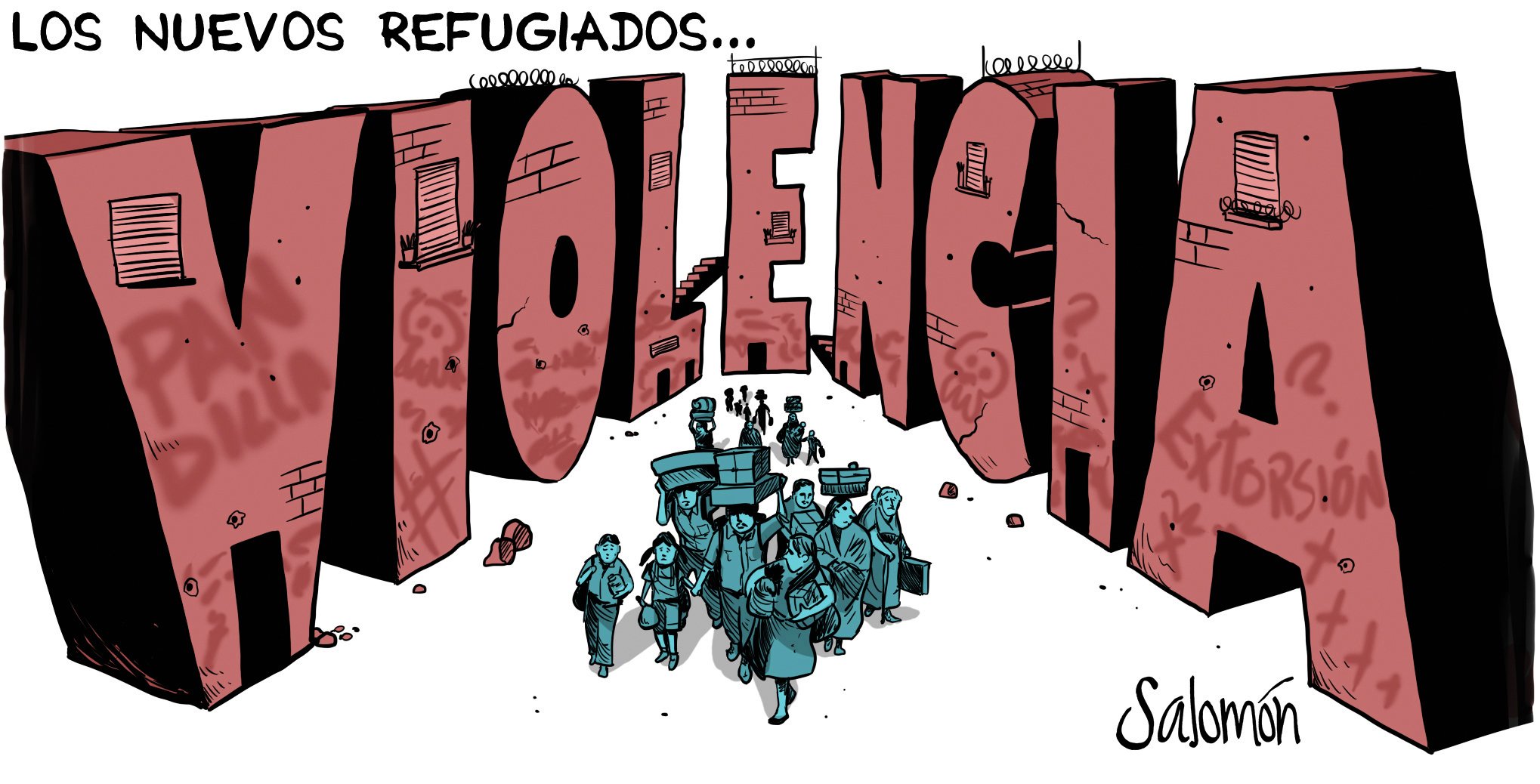RefugiArte: The Refugee Crisis illustrated by Latin American artists

RefugiArte: The Refugee Crisis illustrated by Latin American artists
Paolo Bernasconi – Refugiarte 2018
Through illustrations, more than 50 Latin American artists joined UNHCR to give testimony of the stories of million or refugees and displaced.
RefugiArte 2020-2021 is an initiative from UNHCR, the UN Refugee Agency that seeks to raise awareness and disseminate, through art, the protection needs of people forced to flee their communities or countries.
The Project began to be developed in 2015 within the framework of the 50th anniversary of UNHCR’s Regional Office for Southern Latin America. At the end of 2018, more than 50 artists from Argentina, Bolivia, Brazil, Chile, Costa Rica, Cuba, Ecuador, Guatemala, Honduras, Mexico, Panama, Paraguay, Peru and Uruguay joined in the initiative through a piece that reflects the reality of refugees worldwide.
In 2017, RefugiArte began to be exhibited in Central America, where UNHCR’s Regional Office for Central America, Cuba and Mexico, based in Panama, took the initiative and incorporated artists from the sub region, who also shared their artwork (through illustrations and caricatures), especially in a region where violence has increased leading to a growth in forced displacement.
RefugiArte has been present in numerous spaces in the cities of Buenos Aires, Santiago de Chile, Antofagasta, San Luis, Quito, Lima, Montevideo. Panama City, San Pedro Sula, San Salvador, and Geneva, among other cities.
The objective of this cultural action is to help raise awareness and disseminate, through art, the protection needs of refugees and internally displaced persons affected by violence, discrimination and intolerance in the world, making a joint cooperation effort for the sake of contributing to the visibility of what the refugee crisis represents for the whole world and to bring this issue closer to society in order to promote positive attitudes towards this population.
At the end of 2019, 79.5 million people were displaced worldwide, the largest number recorded by UNHCR. In the last decade, at least 100 million people have been forced to flee their homes seeking protection within or outside their countries. Forced displacement has nearly doubled since 2010 (41 million then versus 79.5 million now).
In the last years, the American continent has experienced complex dynamics and growing forced displacement, particularly with the rise in the number of people who flee from the North of Central America, Nicaragua and Venezuela, and others who have been internally displaced in Honduras, El Salvador and Colombia. Millions of people in the region have been forced to abandon their homes and try to rebuild their lives in exile.
See below the Refugiarte 2020-2021 official selection
Caminando – Javier Garrido (Argentina)
The piece is inspired in the testimonies of Honduran refugees.

Caminando – Javier Garrido (Argentina)
The piece is inspired in the testimonies of Honduran refugees.
Recuento de incertidumbres – Joel Vladimir Renderos Castillo (El Salvador)
The piece illustrates power relationships, borders, mortality, physical confrontations and human vulnerability.

Recuento de incertidumbres – Joel Vladimir Renderos Castillo (El Salvador)
The piece illustrates power relationships, borders, mortality, physical confrontations and human vulnerability.
Desplazado azul – Punche (Ecuador)
Displacement and the fragmentation of beings fleeing, leaving pieces of themselves with every step they take. Memories, dreams, hope of better days: fragments of themselves in every country they leave behind.

Desplazado azul – Punche (Ecuador)
Displacement and the fragmentation of beings fleeing, leaving pieces of themselves with every step they take. Memories, dreams, hope of better days: fragments of themselves in every country they leave behind.
Bienvenidos – Vanessa Alexandre (Brasil)
My motivation for the production was to portray the hard journey of Venezuelans who arrive in Brazil and other countries, with very scarce resources and difficulties along the way. Some images are represented on the Guajira tapestry: The family – with a pregnant woman – and other scenes that show the exodus of those who left the country amid difficulties. All of this from a child’s point of view.

Bienvenidos – Vanessa Alexandre (Brasil)
My motivation for the production was to portray the hard journey of Venezuelans who arrive in Brazil and other countries, with very scarce resources and difficulties along the way. Some images are represented on the Guajira tapestry: The family – with a pregnant woman – and other scenes that show the exodus of those who left the country amid difficulties. All of this from a child’s point of view.
Sin-documento 483 – Imyra (Brasil)
Caravans where people are forced to leave their homes with almost no belongings and to walk to other places without any certainty of what they will find on the way or if they will get to a better place.

Sin-documento 483 – Imyra (Brasil)
Caravans where people are forced to leave their homes with almost no belongings and to walk to other places without any certainty of what they will find on the way or if they will get to a better place.
El corazón en la mochila – Ana Espriella (México)
The work presents the moment when a person is forced to leave their country and the only thing they can carry is the love for their home in their heart.

El corazón en la mochila – Ana Espriella (México)
The work presents the moment when a person is forced to leave their country and the only thing they can carry is the love for their home in their heart.
Comunidad asediada – Salomón (El Salvador)
Forced displacement, which is the result of extortion, poverty and above all, gang violence and which creates a negative impact on our culture, especially on the safety of our vulnerable communities.

Comunidad asediada – Salomón (El Salvador)
Forced displacement, which is the result of extortion, poverty and above all, gang violence and which creates a negative impact on our culture, especially on the safety of our vulnerable communities.
Los nuevos refugiados – Salomón (El Salvador)
Forced displacement, which is the result of extortion, poverty and above all, gang violence and which creates a negative impact on our culture, especially on the safety of our vulnerable communities.

Los nuevos refugiados – Salomón (El Salvador)
Forced displacement, which is the result of extortion, poverty and above all, gang violence and which creates a negative impact on our culture, especially on the safety of our vulnerable communities.
Entre nosotros – Ernesto Saade (El Salvador)
Forced displacement is a very common problem in Latin American countries, but it seems that most people do not realize it or choose to indulge in apathy, to such an extent that those displaced walk among us and we don’t even know they are there. The light represents the hope that, many times, is the only thing displaced people can hold on to.

Entre nosotros – Ernesto Saade (El Salvador)
Forced displacement is a very common problem in Latin American countries, but it seems that most people do not realize it or choose to indulge in apathy, to such an extent that those displaced walk among us and we don’t even know they are there. The light represents the hope that, many times, is the only thing displaced people can hold on to.
Desangrar – Alejandro Valencia Vargas (Colombia)
Forced displacement, like the continuous drop emanating from a body, bleeds out. With the gray color, identification with specific places is avoided, hence the message is generalized.

Desangrar – Alejandro Valencia Vargas (Colombia)
Forced displacement, like the continuous drop emanating from a body, bleeds out. With the gray color, identification with specific places is avoided, hence the message is generalized.
El camino truncado – Gabriela Jaime (México)
At some point I tried to go to another country. I was in a privileged position to have access to an education, to catch a plane and to have a place to stay. But many others are not [in a privileged position]. They flee from violence and do not have the possibility of returning. The path becomes more violent than flight, doors that close one after another, it’s always pushing.

El camino truncado – Gabriela Jaime (México)
At some point I tried to go to another country. I was in a privileged position to have access to an education, to catch a plane and to have a place to stay. But many others are not [in a privileged position]. They flee from violence and do not have the possibility of returning. The path becomes more violent than flight, doors that close one after another, it’s always pushing.
Travesía de la esperanza – Ricardo Parra (Chile)
The hope of searching for a new, safe and prosperous future.

Travesía de la esperanza – Ricardo Parra (Chile)
The hope of searching for a new, safe and prosperous future.
Mi voluntad – Efont (Venezuela)
The fundamental inspiration is everything we have experienced in Venezuela. The hardest thing is to have separated from my daughter; to have to see her leave without knowing if I will see her again. My greatest comfort is that another country has welcomed her and given her, without even knowing her, a new light, a new chance at life.

Mi voluntad – Efont (Venezuela)
The fundamental inspiration is everything we have experienced in Venezuela. The hardest thing is to have separated from my daughter; to have to see her leave without knowing if I will see her again. My greatest comfort is that another country has welcomed her and given her, without even knowing her, a new light, a new chance at life.
Hogar – Barrial (Perú)
The home of the families is there: in their union, in their arms, the parents shelter their hopes.

Hogar – Barrial (Perú)
The home of the families is there: in their union, in their arms, the parents shelter their hopes.
On my way to liberty – Larissa Coelho (Brasil)
I was inspired by the stories of Venezuelan refugees and migrants. Climbing and walking though blind curves in the mountains is extremely dangerous and painful, but these people are doing it for liberty and safety. I tried to represent exactly this with a family of four and their luggage.

On my way to liberty – Larissa Coelho (Brasil)
I was inspired by the stories of Venezuelan refugees and migrants. Climbing and walking though blind curves in the mountains is extremely dangerous and painful, but these people are doing it for liberty and safety. I tried to represent exactly this with a family of four and their luggage.
No me quiero rendir – Amanda Rodríguez (Chile)
Hundreds of people are stranded at the Chacalluta border crossing (Chile-Peru) because their entry into the country is rejected, and Peru changes immigration regulations, therefore they cannot return.

No me quiero rendir – Amanda Rodríguez (Chile)
Hundreds of people are stranded at the Chacalluta border crossing (Chile-Peru) because their entry into the country is rejected, and Peru changes immigration regulations, therefore they cannot return.
